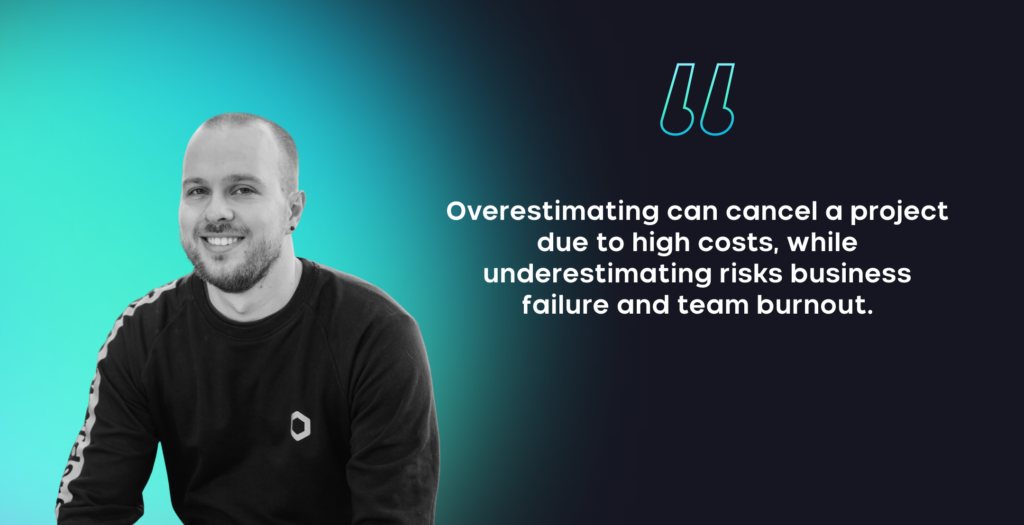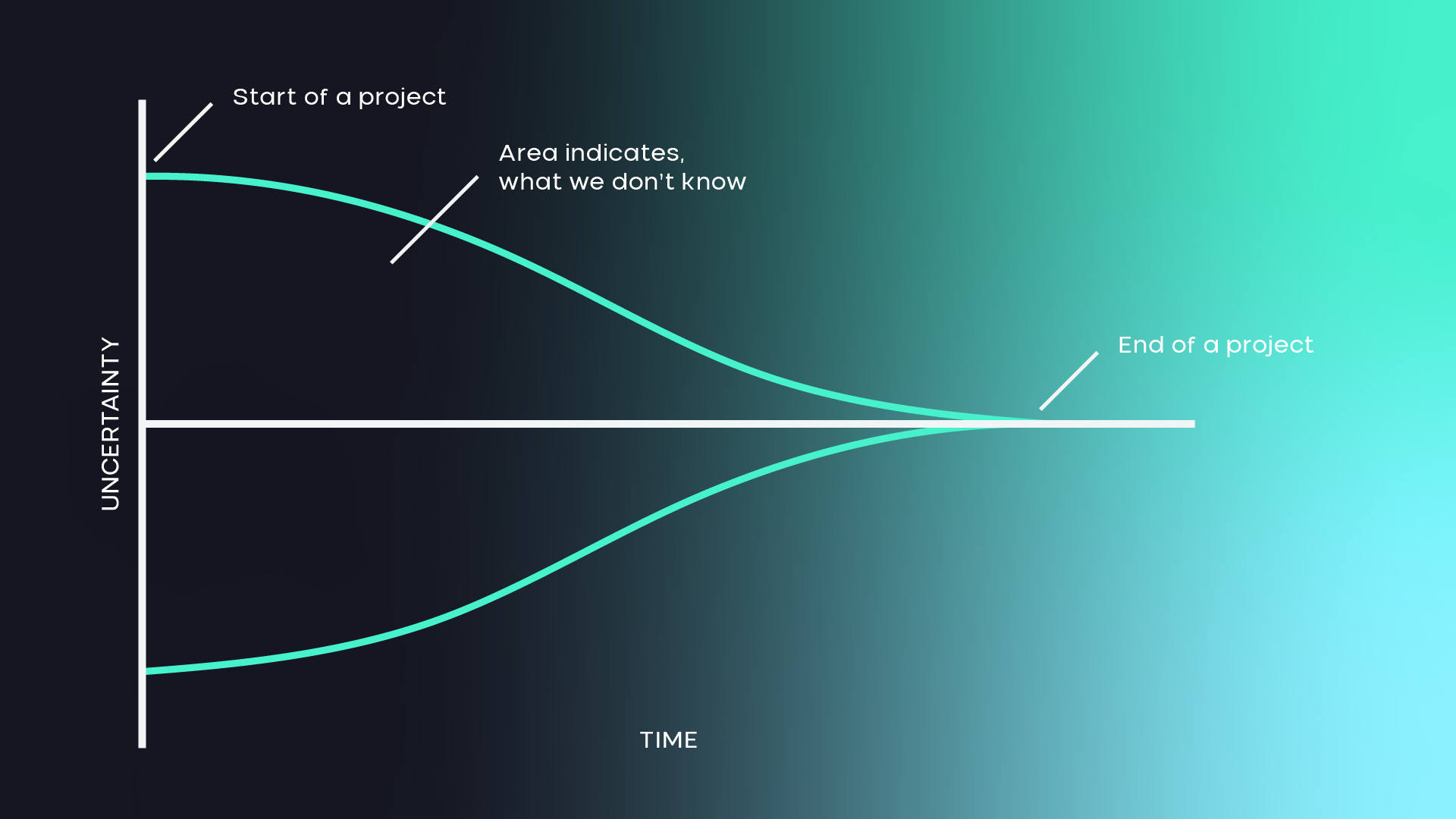Our Mobile Tech Lead at TeleSoftas, Rokas, has decided to share a few tips and tricks for making accurate estimations, avoiding common pitfalls, and understanding the essential information needed. Rokas Jasonas has been part of TeleSoftas for over 10 years and gathered expertise on how to estimate in the right way. Find 7 tips that will help you predict when the next estimation is necessary.
What is software estimation?
Estimation is crucial in software development as it determines project timelines, costs, and resources. The goal is to provide accurate and realistic estimates to guide project planning, budgeting, and scheduling.

#1: Every step counts
When planning a project, you should keep in mind that even activities like discussing the project’s details require time and resources. Therefore, you should estimate the time needed for task management, DevOps, code reviewing, deploying, testing, wireframing, designing, bug fixing, planning, and communication.
#2: Wrong estimates can fail the project
Overestimating may lead to a project being cancelled because it’s too expensive, while underestimating may result in a failed business and team burnout.
#3: Communication is key
Communicate risks to the business by clarifying uncertainties with specific questions and paraphrasing client thoughts for better understanding, as general tasks can lead to significant estimation errors. As well as, calculate the most likely case option, and average the best-case and worst-case scenarios.
#4: Prepare for estimation
There are a few types of information:
I am limited by this factor
I can estimate this
I need to get more specific information
I need to write down an assumption
#5: Don’t be scared by uncertainty
In the early stages of software projects, requirements are often unclear and estimates inaccurate. However, as the project progresses, variability decreases, leading to more accurate plans.
This is how uncertainty decreases from the early stages to the end of the project:

#6: Use ranges and targets
Avoid excessive precision and give estimates in ranges, like 974 hours vs. 1000 hours. When planning, specify exact dates: for example, Q4 or January 1st vs. January 31st. Remember, estimating or hitting the target: an estimate is not a commitment.
#7: 75% accuracy is the goal
Good estimation, with 75% accuracy, is sufficient if the business can make a decision based on it. This also depends on the information we have and our skill in estimating.

Rokas Jasonas
This article was written by a Mobile Tech Lead in TeleSoftas. For more insights, follow him on Linkedin – Rokas Jasonas.
